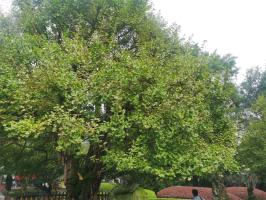How Does Planting Trees Stop Climate Change
Climate change is an ongoing issue that has been affecting the world for several decades now. Trees are known for their role in producing oxygen and reducing carbon dioxide in the atmosphere. But how can planting trees help in stopping climate change? This article will provide a clear understanding of how planting trees can help mitigate the effects of climate change.
How Trees Help Stop Climate Change
Trees are vital components in the earth's ecosystem and provide various benefits, including carbon sequestration, oxygen production, and the regulation of the water cycle. Carbon dioxide from the atmosphere is captured by the tree's leaves, branches, and trunks through a process known as carbon sequestration. The carbon is then stored in the trees and soil as carbon sinks, reducing the amount of carbon dioxide in the atmosphere and slowing the greenhouse effect responsible for climate change.
The Importance of Afforestation
In deforested areas, planting new trees helps plant “new lungs” that absorb pollutants like carbon dioxide (CO2). As trees grow, they absorb more carbon and store it in their trunks and roots. Programs such as afforestation, where trees are planted in deforested areas, are significant for fighting climate change. But planting trees in areas with existing forests has also shown to have positive effects on the environment. Existing forests become denser and provide even more resources for carbon storage, biodiversity, and fight against degradation and deforestation.
The Economic Value of Planting Trees
Planting Trees offers multiple benefits to an economy. Not only do they prevent deforestation, reduce erosion and improve water quality, but they also promote job creation, and a variety of beneficial spinoffs and resources. Tourism opportunities, wildlife habitation, and research possibilities are among the numerous benefits of planting trees. For example, reforestation in degraded areas can help to overcome land-use conflicts and diversify populations' income.
Urban Trees
Trees in cities are vital in reducing the impact of climate change. Urban trees help to reduce the urban heat island effect by creating shade, reflecting heat and breaking up wind patterns. They also mitigate pollution by absorbing noise and filtering out polluting elements from the air. As a result, planting trees in cities and rural areas can help to mitigate the effects of climate change by providing a host of economic, environmental, and social benefits.
Conclusion
Climate change is an issue that affects us all, and it's essential to take a proactive approach in mitigating its effects. To achieve this, afforestation, reforestation, and urban planting programs need to be developed and implemented. The benefits of tree planting are numerous and impactful, from reducing carbon dioxide emissions to promoting biodiversity and habitat creation. The value of trees in combating climate change is undeniable and vital for the survival and sustainability of future generations.

 how many times do yo...
how many times do yo... how many planted tre...
how many planted tre... how many pine trees ...
how many pine trees ... how many pecan trees...
how many pecan trees... how many plants comp...
how many plants comp... how many plants can ...
how many plants can ... how many plants and ...
how many plants and ... how many pepper plan...
how many pepper plan...






























